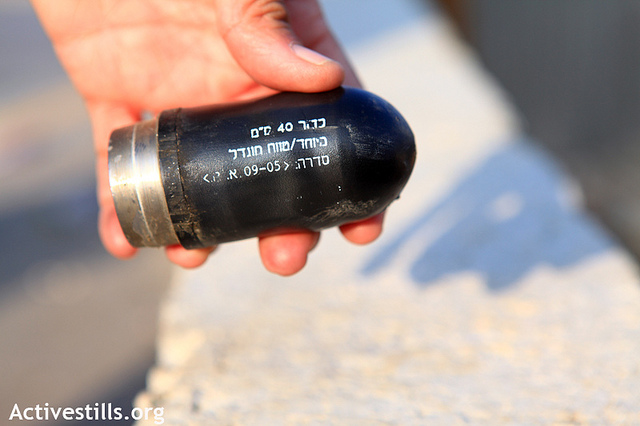
Standard aluminum tear canisters, which are being used in Egypt, have injured thousands in the West Bank over the past eight years of demonstrations against the Separation Barrier. Soldiers regularly break army regulations and fire canisters directly at protesters– turning the canister into a large bullet– and almost never face punishment. Three weeks ago, a soldier fired a tear gas canister directly at me from a distance of 15 meters in Beit Ummar. Luckily I was able to get out of the way. Last summer, an American Jew was not as lucky as me and lost her eye in a demonstration when a tear gas canister was fired directly at her head. The soldier who fired the canister was cleared of any wrongdoing.
According to international coverage of the demonstrations in Egypt, there has been little coverage of police or army using tear gas canisters as large bullets. As the demonstrations slow down, more evidence could emerge that tear gas canisters were used offensively as they are used in the West Bank. However, it seems unlikely given the fact that there have been almost no reports about this to come out of Egypt in the past seven days.
The United States provides countries all over the world with military products with little regard of how the products are used. When it comes to tear gas, the issue is not that the United States is providing Israel and Egypt with the tear gas. The issue is how the gas is used and who it is used against. It is legitimate for a state to use tear gas in crowd control situations. It is not legitimate to use tear gas canisters as large bullets with the intention to kill or injure protesters.

